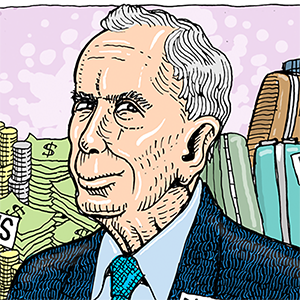More construction, maybe less solar. South Florida's climate action plan under Trump
Published in Science & Technology News
MIAMI — Monroe County has seven projects underway to elevate roads in the Florida Keys, keeping them dry even as rising sea levels threaten to leave them permanently underwater.
In a presentation this week, Chief Resilience Officer Rhonda Haag reported that five years ago, the county had no plans in motion to raise roads, even as residents complained that annual high tides made it impossible for mail and garbage trucks to traverse saltwater-sogged streets.
“We wouldn’t have seven projects underway without that federal funding. We don’t have that kind of money lying around,” Haag told a crowd of local government planners, engineers and politicians Tuesday at the Southeast Florida Climate Leadership Summit, the 16th-annual gathering of a group of people whose day-to-day jobs revolve around protecting their communities from climate change.
With President-elect Donald Trump poised to begin his second term next month, officials in South Florida are wondering whether that flow of federal money — so crucial to building and buying their way to a dry future under climate change — will keep coming in the next four years.
Those seven road projects will cost $300 million, Haag said. And there’s still $4.7 billion of road raising left to go — for the Keys alone.
Trump has been outspoken about his desire to pull back on efforts to fight climate change, including withdrawing from global commitments to cut back greenhouse gas emissions, open up additional oil and gas drilling on federal land and undo some of the Biden-era subsidies for clean energy.
But in this hotel conference room in Key West, officials seem undaunted.
“In Trump’s first term, it was the local governments that kept the momentum going. And I think we’ll see that again,” said Broward County Mayor Beam Furr.
Standing in front of a table covered in flyers advertising his county’s latest environmental campaigns — a plan for Broward to reduce greenhouse gas emissions to net zero by 2050, a strategy to install electric vehicle chargers across the county and a callout for businesses to join Broward’s “carbon conscious business program” — the mayor said Broward has no plans to stop adapting to and planning for climate change in the next four years.
“If anything,” he said, “it makes me want to go faster.”
The source of some of that positivity was obvious in a packed session earlier that morning, where government staffers listened carefully as Florida’s chief resilience officer talked about the state’s single largest pot of money for local climate adaptation: the Resilient Florida program.
“We are still just getting started in this state, and in the next five to 10 years there’s going to be a lot of projects launched,” Wes Brooks, the state’s CRO, told the audience.
Since 2021, Florida has given local governments $1.55 billion to fund nearly 700 projects that help communities adapt to climate change, and $800 million of that went to South Florida communities. That includes mapping where the sea will rise in oceanfront cities, installing beefed-up stormwater pumps to keep streets dry and even helping elevate roads in the Keys.
“We wouldn’t have had any progress without the Resilient Florida funding,” Haag told the Miami Herald.
The program, begun under Gov. Ron DeSantis, has largely been funded with state cash, except for a huge initial infusion of federal COVID-relief money that the state elected to funnel into this fund.
This, at least, presents one pot of money that isn’t likely to be affected by presidential politics.
Patricia Gomez, Miami-Dade’s chief resilience officer, said there are enough projects in the pipeline in the county that progress will continue in the next four years, even if funding starts to dry up. In Miami-Dade alone, there’s $4.7 million in federal funding to install a slew of electric vehicle chargers across the county, a fleet of county cars that are increasingly running on electricity, rather than gas, and an urban tree forestry plan designed to ramp up tree planting from Miami to Kendall.
“There will never be enough funding to cover everything we want, but we have been very successful at finding federal grants and we will continue to do so,” Gomez said. “We are going to continue to work across the aisle.”
Renewable cash woes
The one area where government officials show some signs of worry over the next four years is in the transition from fossil fuels to renewable energy.
So far, Florida has not invested significant state money into the process and has stripped local governments of the ability to attempt to make the transition, in a few cases.
Addressing only the impacts of climate change, like sea level rise-driven flooding, without tackling the cause, unchecked burning of fossil fuels, is like an overflowing, unattended sink, said Susan Glickman, vice president of policy and partnerships for the climate action nonprofit CLEO Insitute.
“We are mopping up the floor, and we never turn off the faucet,” she said.
The biggest pot of money in Florida to use fewer fossil fuels is $346 million — from the Biden administration’s Infrastructure Reduction Act — to fund a pair of state-run energy efficiency programs designed to help homeowners save money on their power bills.
Neither program is up and running yet, but Tony Morgan, deputy director of the Florida Office of Energy, told an audience Tuesday that Florida hoped to have a pilot project up and running by the first quarter of next year. He got the call Tuesday confirming that federal funding for at least one of the programs was secure.
“The funding will be allocated by the time the next administration is in office,” he said.
_____
©2024 Miami Herald. Visit miamiherald.com. Distributed by Tribune Content Agency, LLC.







Comments